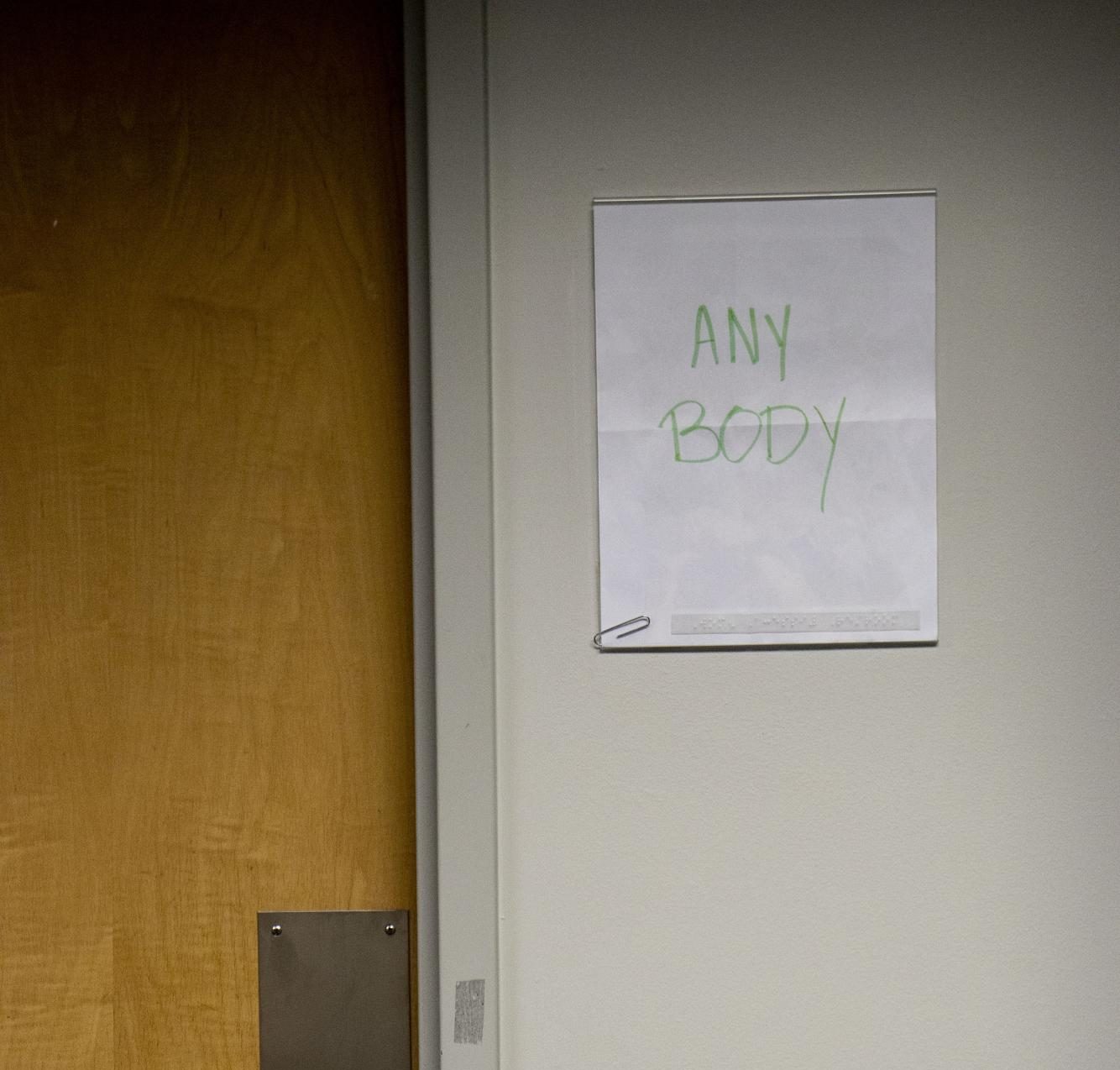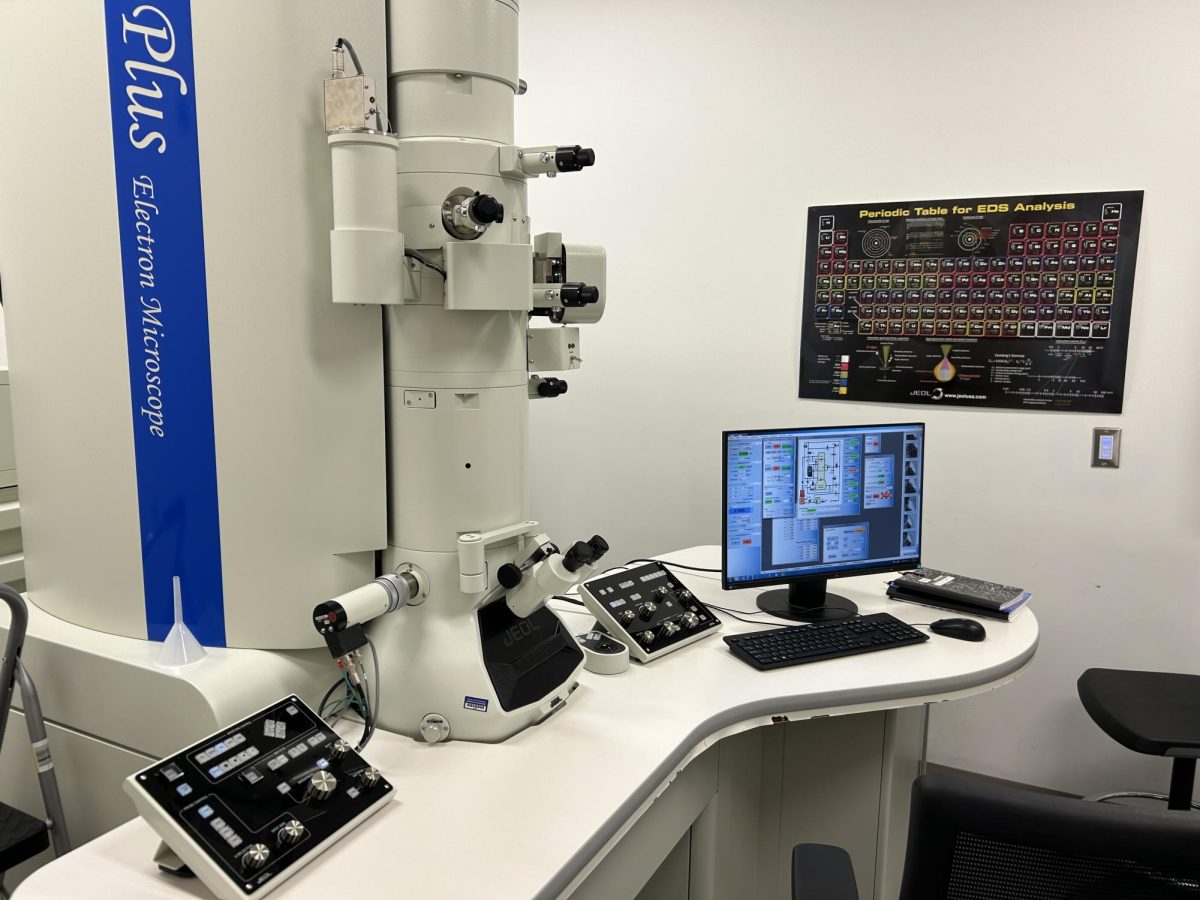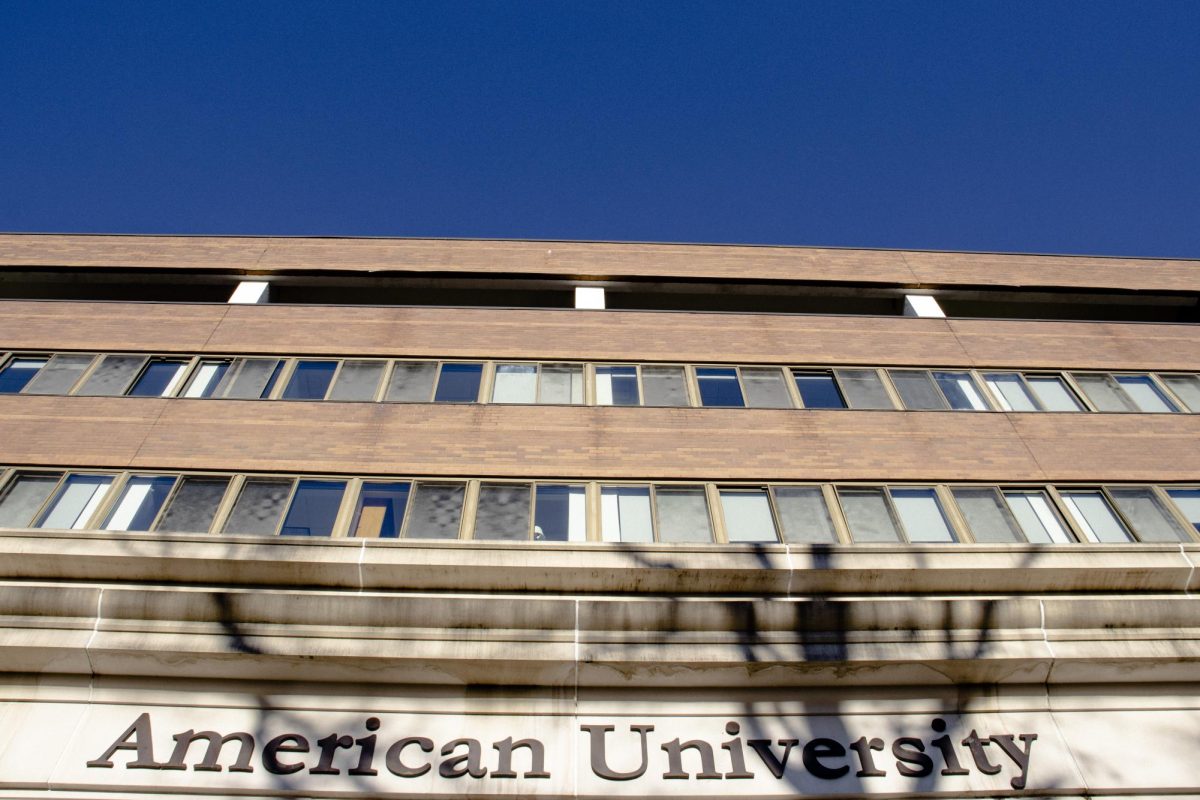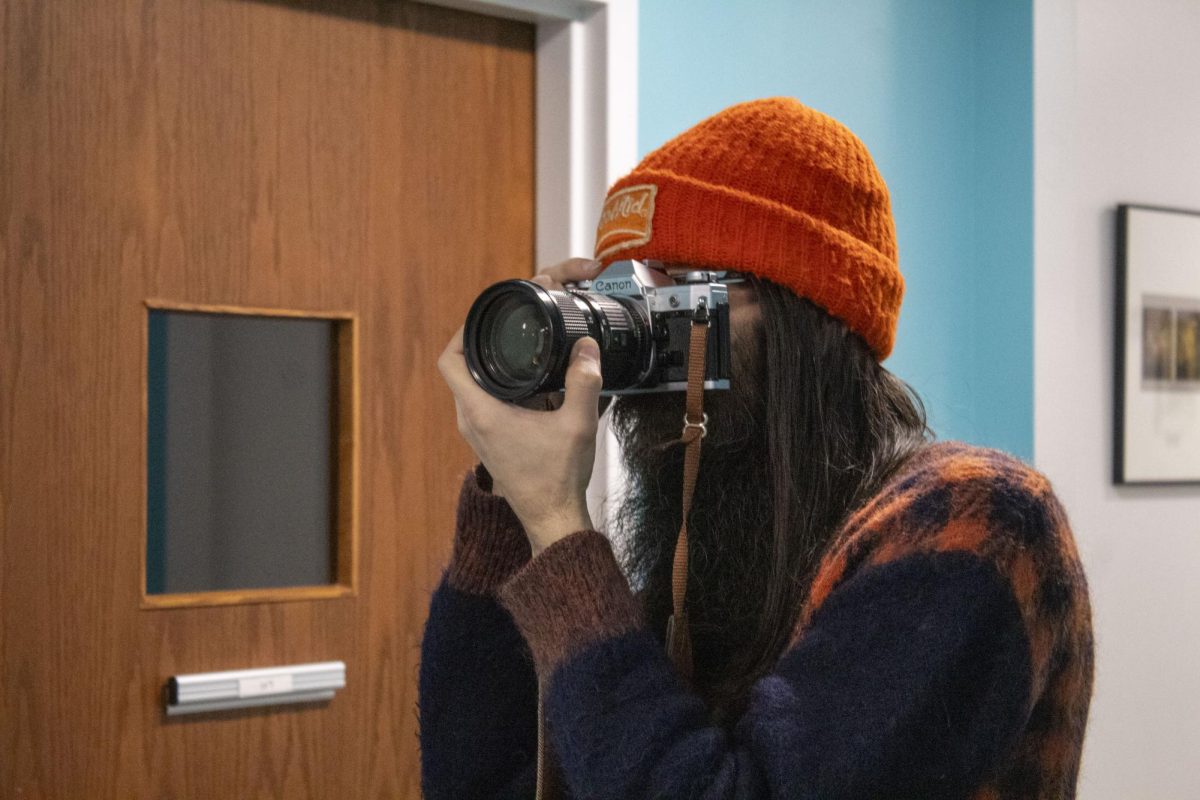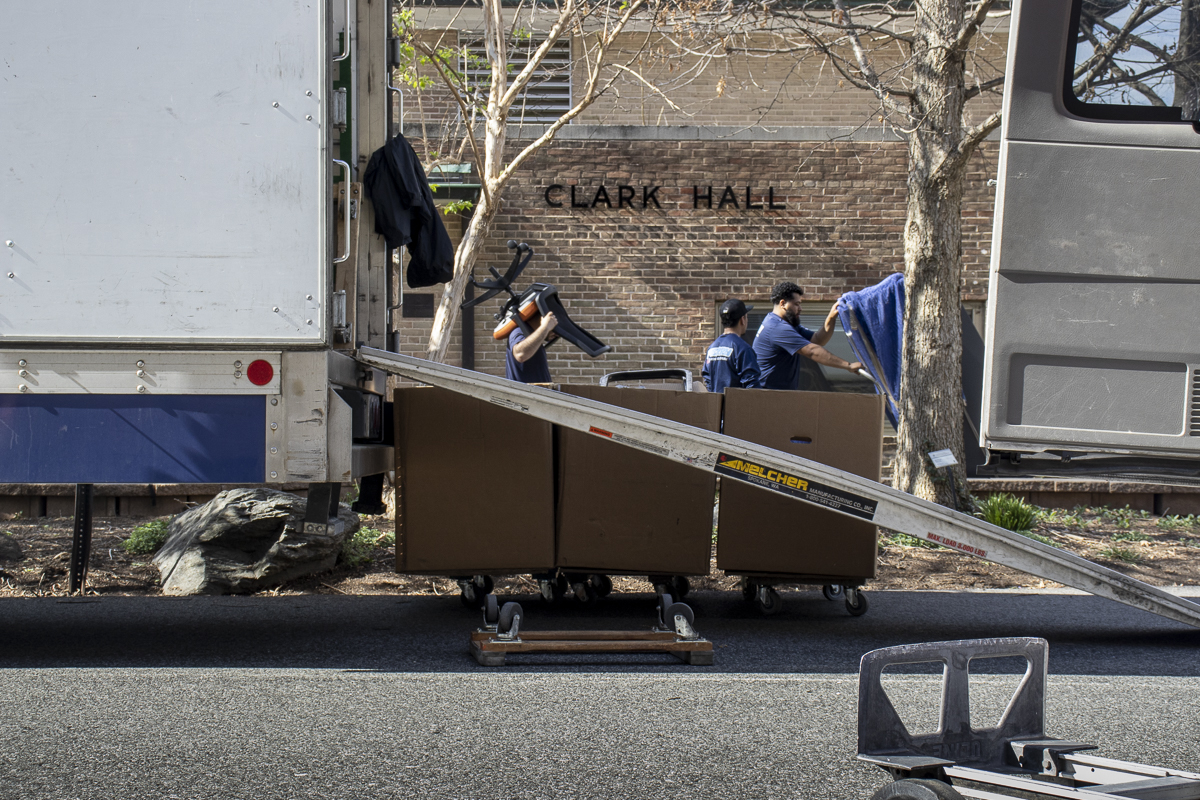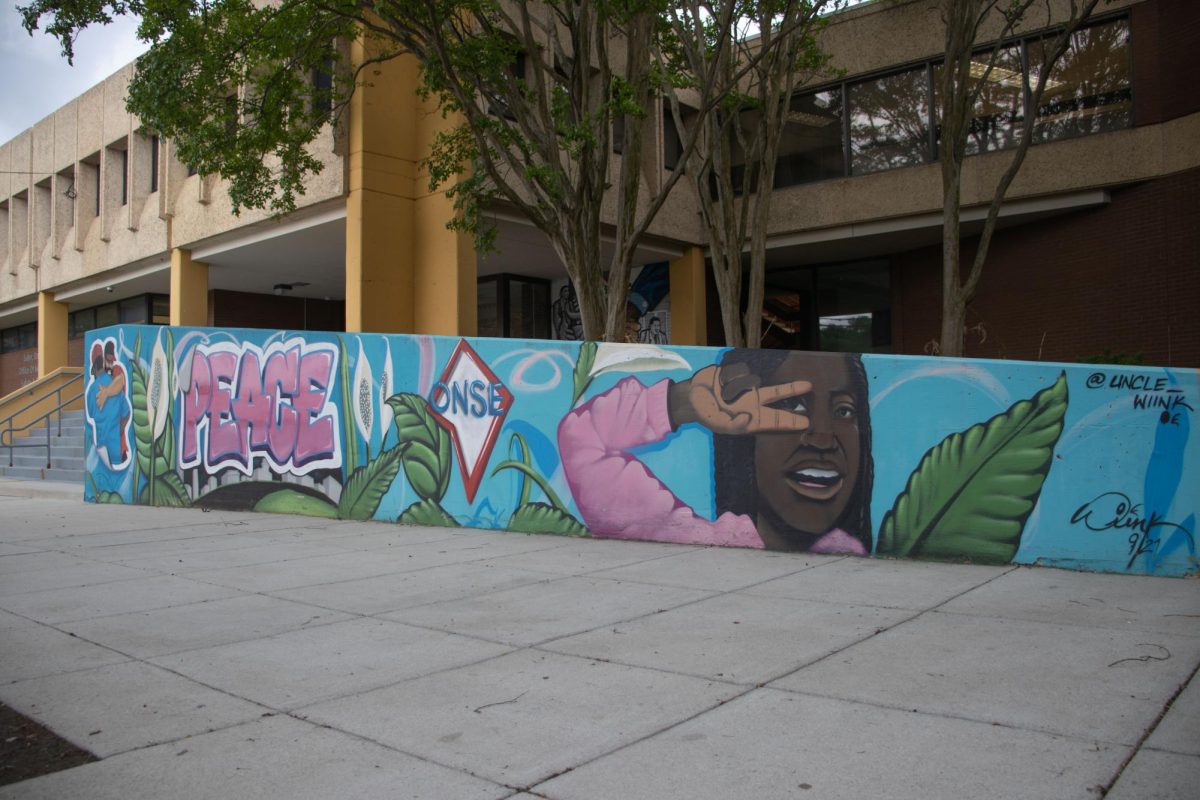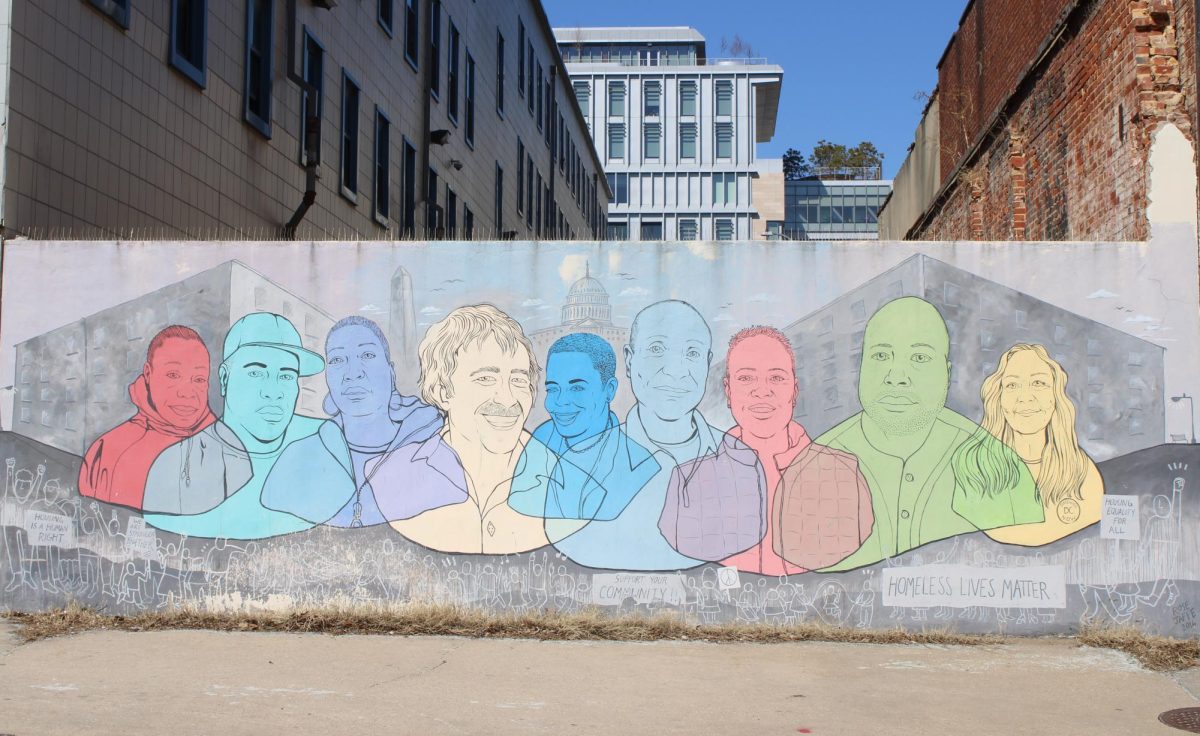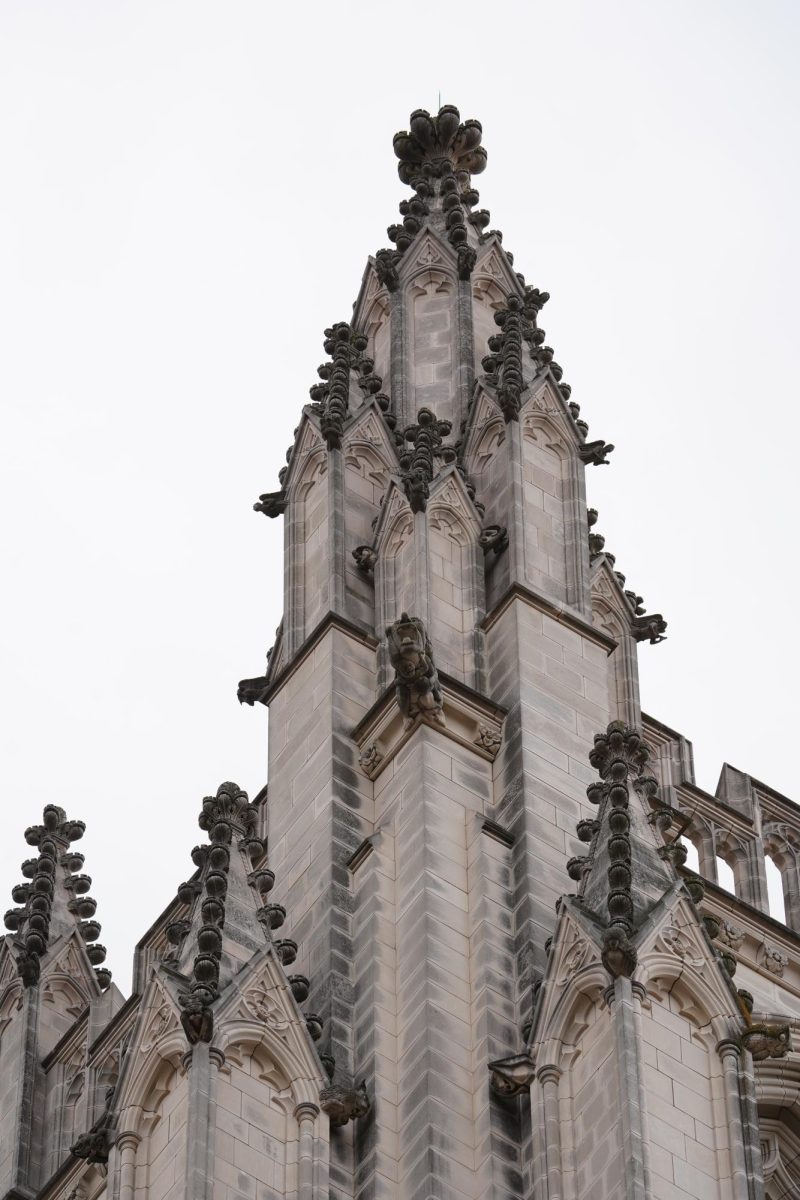An American University history student had always considered the restrooms outside his office all-gender. The history student, who asked not to be named out of concern that speaking out could affect his graduate school admissions, began working in the History Department as a student staff member three years ago. Since then, his desk on the first floor of the Battelle-Tompkins Building faced the restrooms, so he had a clear view of them.
But on Nov. 20, 2024, Transgender Day of Remembrance, the history student noticed the signs had been changed to “Male” and “Female.” He awaited guidance from the university or at least notice of the sign change. None came.
At first, the history student assumed AU hadn’t sanctioned the change. He thought it might have been a hate crime, as did other members of the Battelle-Tompkins community, he said. The signs weren’t glued down — they were paper and easy to switch out. The history student, who said people he knew in Battelle-Tompkins felt harmed by the change, decided to restore the restrooms’ all-gender signs.
“I was like, ‘Okay, I can fix this,’” the history student said. “Because that’s like my area — our area — of the building and all I had to do was print out a piece of paper with the all-gender restroom signage and put it back, restore what I thought to be the status quo.”
But in January, the history student said a university employee notified him that the change was not a hate crime but an official university mandate to ensure the bathrooms were in compliance with the District of Columbia Building Code. According to university officials, the restrooms were not officially designated as all-gender. It remains unclear who initially changed the signs to gender-neutral before the switch in November.
In the following months the bathroom troubles continued, the history student said. After the university removed the unofficial signs to comply with district code, members of the AU community put up their own signs outside of restrooms on the first floor of Battelle-Tompkins several times in an attempt to restore their designation to all-gender. The issue escalated when the university pointed two surveillance cameras at the restrooms, heightening concerns among the Battelle-Tompkins community.
The history student and multiple faculty members said there are trans students, staff and faculty in Battelle-Tompkins who do not feel safe using single-sex restrooms and deserve safe facilities in the building they use most. Community members said the decision to remove the unofficial signs came at a sensitive time for the trans community, as they face political attacks from the Trump administration and on Trans Day of Remembrance. Still, administrators have continually said the restrooms were not code-compliant when the unofficial all-gender signs were posted.
Though the history student said he only removed the signs once, he said someone else soon ripped down the gendered signs. On March 5, the sign outside the left-side restroom was left torn away and the right-side read “ANY BODY” scrawled in bright green marker. The history student said the left-side had read “Male” the night before.
“It’s very much a whack-a-mole type situation,” he said.
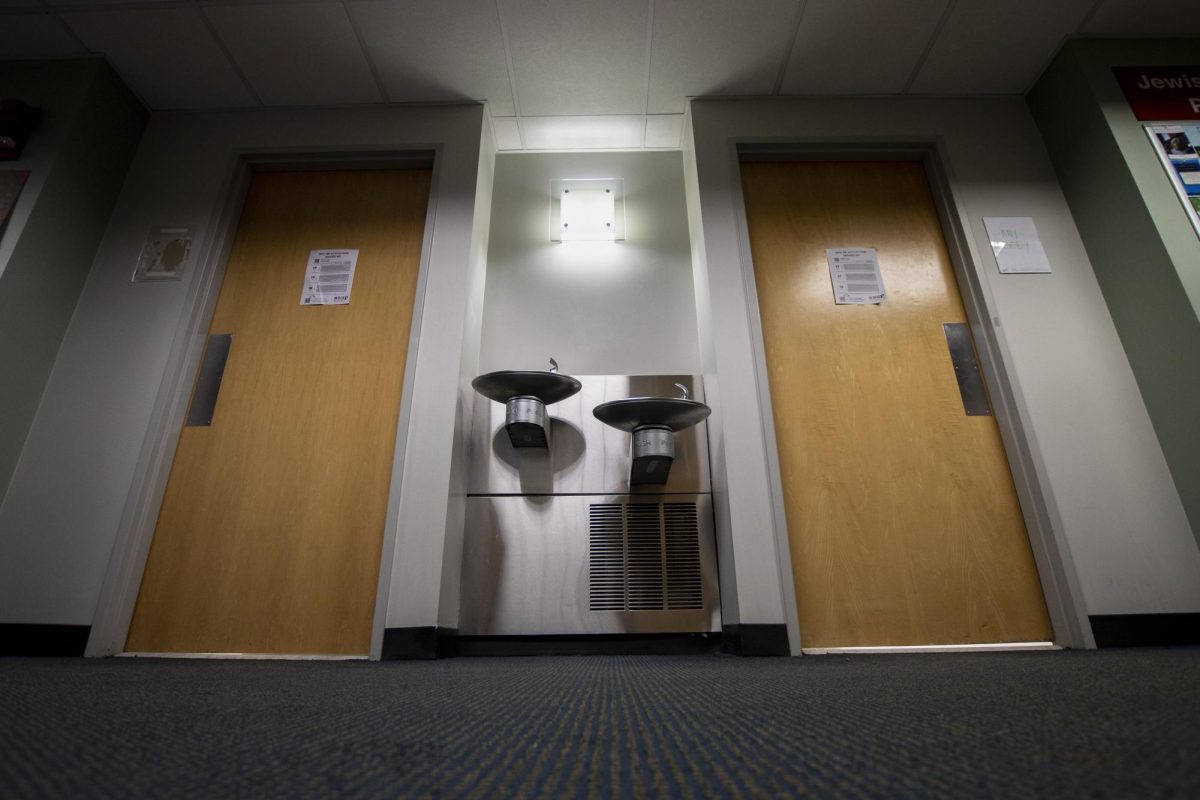
Then, on Feb. 18, Max Paul Friedman, a professor of history, noticed two new surveillance cameras placed on the ceiling near the restrooms.
The history student said the cameras were angled toward the restroom doors. He said he and others in the History Department felt unsettled.
“We were really upset in the office, we were like, ‘Are we being, like, surveilled?’” he said.
Friedman said their presence created concern among Battelle-Tompkins faculty. Though he said he trusts that AUPD officers only access the video when necessary, he called the surveillance of people in Battelle-Tompkins “unnecessary and inadvisable.”
“When those of us who work here noticed them, they were concerned because, probably nobody likes to go into a bathroom knowing that they’re being videotaped, but especially these bathrooms, at this time of controversy,” he said.
According to AU’s website, the AU Police Department “takes a proactive approach to physical security.” AUPD uses video cameras to gather evidence for investigations and to identify people who may be in violation of AU policy or the law, according to the website.
Several History Department faculty members, including Friedman, wrote to AUPD shortly after noticing the cameras in complaint, Friedman said. By Feb. 27, Friedman noticed the cameras were gone.
Katharina Vester, an associate professor of history, called the university’s decision to monitor the restrooms creepy. Vester, who uses she/they pronouns, said that although university officials justified the original sign change by referring to building code, they took the wrong approach to resolving the conflict.
Though they said she appreciates that there’s a code the university must follow, Vester said the correct solution was not to police students.
The university did not provide a comment about the cameras.
Three months, no notice
In meetings with administrators, including a Dec. 2, 2024, meeting with Interim Assistant Vice President of Facilities Management Jonathan McCann, university officials said the restrooms while labelled as all-gender were in violation of the District of Columbia Building Code, Vester said.
On Feb. 10, Bernadette Storey-Laubach, the associate director of facilities management, sent an email to 10 Battelle-Tompkins faculty and staff members addressing their concerns about the bathrooms. AWOL obtained the email from one of its recipients.
In the email, Storey-Laubach said the university updated the restrooms’ signage to male and female in compliance with district code. She said the restrooms were never officially designated as all-gender facilities.
“An individual created signage that closely resembled the All-Gender signs used in other campus buildings, leading many to believe that this was an official designation,” Storey-Laubach said. “As of today, the bathroom signage has been reverted to gendered designations to comply with the code.”
Storey-Laubach declined a request for comment.
Though faculty and staff were involved in discussions with administrators as early as Nov. 25, 2024, according to Vester, the history student said Storey-Laubach’s email, which was forwarded to him, was the first communication he received from administrators regarding the change.
On Aug. 15, 2022, AU announced it would be redesignating all of its existing multi-stall, all-gender restrooms to male and female to meet district building code requirements, according to an email from Chief Financial Officer Bronté Burleigh-Jones. The building code requires that educational facilities have one restroom per 50 occupants of each sex. The university also cited privacy concerns as a reason for making all multi-stall restrooms single sex.
In a Feb. 13, 2023, update, Burleigh-Jones said the code does allow for all-gender, multi-stall restrooms, though feasibility studies, applications and approvals were required. Burleigh-Jones listed Battelle-Tompkins as one of three buildings for which the university would begin all-gender restroom feasibility studies.
Jay DiEdwards, a senior administrative assistant in the College of Arts and Sciences, said they’re frustrated with the university’s apparent lack of action on this front while allocating funds to the Mary Graydon Student Center’s renovation. They said administrators told them budgetary restrictions prevented the university from renovating Battelle-Tompkins’s bathrooms.
“[It’s] very frustrating to see that our building is on their website, and supposedly, like, one of the main buildings receiving updates,” said DiEdwards, who uses he/they/she pronouns. “But then they went and did a whole floor in MGC that probably cost them how much money? Millions, probably, to update. And then they are like, ‘Oh, well, the money’s gone. We have no more money. We can’t do Battelle, at least not for a while.’”
In an email comment to AWOL, Assistant Vice President and Deputy Chief Communications Officer Elizabeth Deal said the university completed a feasibility study for the restrooms in 2023. She said the university updated the signs in late 2024 to reflect their single-sex designations.
“The feasibility study that included Battelle-Tompkins was completed in 2023. In late 2024, we were contacted and made aware of the presence of signs on the first floor in the Battelle-Thompkins building that were non-compliant with DC code requirements for restrooms in public buildings,” Deal said.
DiEdwards said McCann, the interim assistant vice president, told them in the Dec. 2, 2024, meeting that the university began looking into the restroom sign change in response to complaints from cisgender members of the community.
“Some cis people claim that, ‘Oh, well, you can still see someone using the urinals,’ and that makes them uncomfortable,” DiEdwards said.
Similar complaints have come up in the past, Friedman said.
The university did not provide a comment on any reason for the sign change beyond district code.
The Battelle-Tompkins community responds
DiEdwards said trans and queer members of the Battelle-Tompkins community are upset that the university failed to consider trans people in their decision with the timing and lack of notice of the sign change.
“The pure oversight that they did this on Trans Day of Remembrance, like, that just shows that there is really a lack of understanding, a lack of respect, a lack of care for trans and queer people,” they said. “Regardless of what D.C. code says, they for sure could have at least alerted us.”
Deal said in a March 19 interview the sign change’s timing was inadvertent.
The signs were changed less than a month after the election of President Donald Trump, who has made moves to erase government support for trans people through executive orders restricting gender-affirming care, banning trans girls from women’s sports and upholding “single-sex spaces.”
In early February, the Trump administration removed language from internal documents that prohibited surveillance based on sexual orientation and gender identity, according to reports from LGBTQ nation and Bloomberg Government News. The Biden administration added those protections to the Department of Homeland Security policy manual, which prohibited the department from “intelligence activities” related solely to people’s queer identities.
DiEdwards said they were upset with the university’s lack of transparency and consideration of the change’s impact on queer and trans students, especially at a time when trans people are under political attack.
“Trans people are being erased right now, or not even right now, but have been for a very long time,” DiEdwards said. “If the administration in the university claims that they are upholding diversity and, like, wanting to uplift marginalized communities, then don’t just say it, show it.”
All-gender restroom access is especially important in Battelle-Tompkins, a building that houses trans students and employees like themself, DiEdwards said. He said being disabled makes it so that walking to other buildings to use the restroom is especially difficult. They said the walk can take as long as 20-30 minutes and can be painful.
“This building, the departments themselves, like, again, our department supports a lot of queer and trans students,” they said. “And for myself, specifically, I’m a person who is trans and disabled, so for me to have to go to another building to use an all gender bathroom is a lot.”
Amid the bathroom troubles, the Battelle-Tompkins community has stuck together against the university’s sign change efforts, passing along information as they get it, DiEdwards said.
“We know what a bathroom is for. It’s to go to the bathroom, and it shouldn’t be like a contentious space,” DiEdwards said. “It should just be a space where you can be.”
The history student said he stands by his decision to relabel the restrooms as all-gender.
“We just have to be there for each other, especially in these times where I feel like trans people are being attacked just left and right every single day, and I think there’s a lot of uncertainty with that,” he said. “So we have to stand up for, you know, people and their identities.”
Correction: Jay DiEdwards is a senior administrative assistant in the Critical Race, Gender and Culture Studies Department of the College of Arts and Sciences. A previous version of the article incorrectly referred to them as the senior administrative assistant for the College of Arts and Sciences.
Correction: The Trump administration removed language from internal documents that prohibited surveillance based on sexual orientation and gender identity. A previous version of the article incorrectly stated that the language protected surveillance based on sexual orientation and gender identity.
Editing by Kalie Walker, Caleb Ogilvie and Alexia Partouche.


